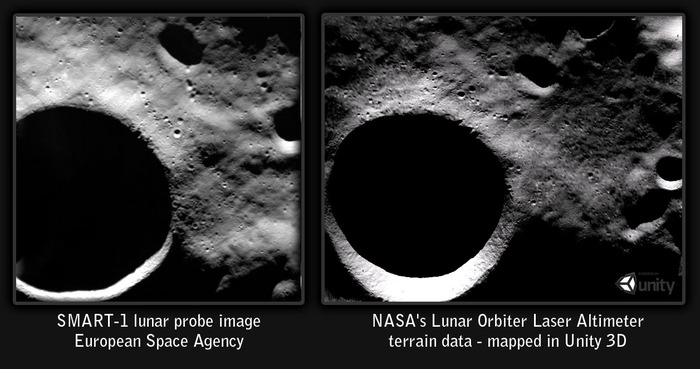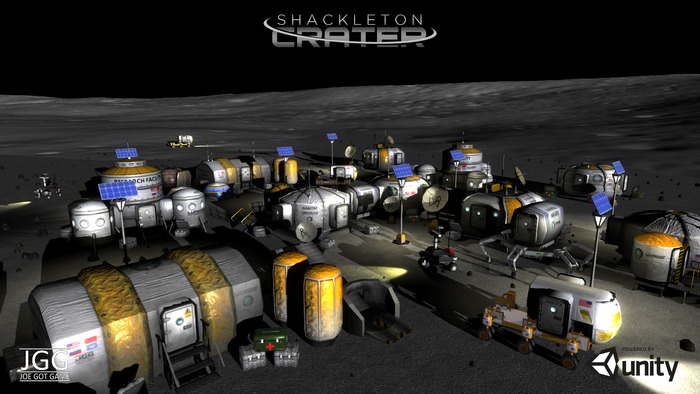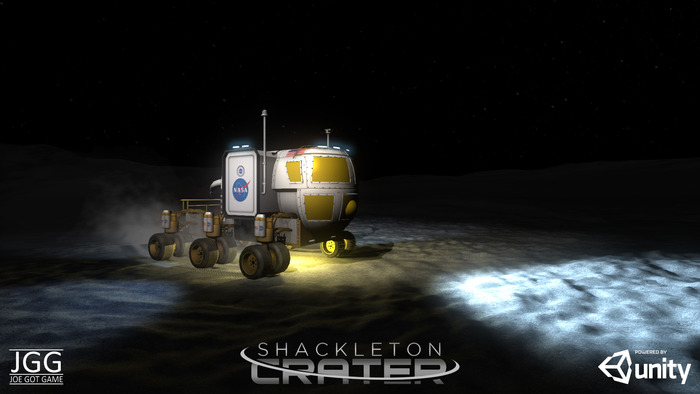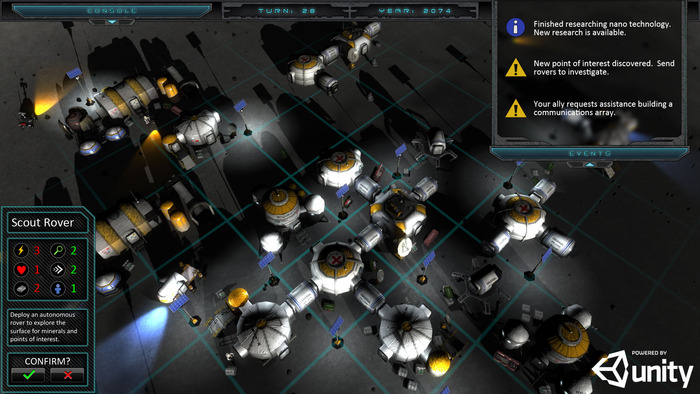By David Radd
Last week we posted an interview with Joe Ybarra and Josef Shindler about their initiative in making games in the new and constantly evolving gaming industry. As a follow up on that, we dig down deep into the details of Shackleton Crater.
[a]list: Talk to me about the desire to visit the moon and how that fuels Shackleton Crater.
Joe Ybarra: I think it’s key for several different reasons. I love to build things about exploration and products like Seven Cities of Gold and MULE are really interesting to me. If you look at modern exploration, you look to space. Going to the moon is a interesting thing, but as a Baby Boomer, I watched [the moon landings] on television. They were televising the launches and there was only four channels back then and they were all carrying it, so you were watching science back then whether you wanted to or not. That formed a lot of my attitudes and beliefs growing up. I saw the energy of the Apollo program and that’s what really inspired me as a designer.

[a]list: So the backstory for Shackleton Crater, is it set on the backdrop of the Cold War space race, or is it more contemporary
Josef Shindler: The idea is the UN would put a motion in and create a corporation that will be responsible for Lunar travel and different nations would see the possibility of mining the moon via this set up.
Joe Ybarra: The fiction says the reason nations are doing this is the profit. They need to see a payoff and with all nations doing this, they have the point-of-view of trying to one-up the other nations along with the motive of trying to turn a profit. If you are sponsored by the U.S. your capabilities are different than the Chinese or the European Union.
We give Luna Corp 10 years to build up the technology necessary to sustain permanent settlements on the moon. It’s starting from about 2030 and telling a story realistically over a period in time, so it might end between then and 2130. We want to be consistent with how technology scales over time so eventually you’ll be adding the technological mass production and creating the factories from 3D printing and robotics.

If you look at crowdsourcing, if some rich backer was motivated to participate in some stuff like this, it could be real.
[a]list: It seems there’s a real bent towards hard science…
Josef Shindler: We take as much care to make it as realistic as possible. The one on the right was modeled in Unity using real Lunar data; we can do that for the entire Moon. We’re doing a bunch of really interestng stuff, like letting you set up solar arrays and build it out on your model. The content is compelling, though it’s certainly a lot easier to make it up!
Joe Ybarra: I’ve been a big fan of science fiction of all my life, things like 20,000 Leagues Under the Sea; Jules Verne was creating things based on science of the time. One day I was talking about the fragmented market and thought, ‘we haven’t seen anyone go after that idea.’ We saw this as an opportunity and it makes us feel comfortable with what we’re doing. Our position is that there’s plenty of interesting stuff to explore without getting too crazy.
The real secret sauce is taking something that’s a hardcore simulation and making it something fun. That goes back to the gameplay itself – you have tenuous excitement and what you’re doing seems cool. The science aspect is interesting and we have to build a game that’s killer, so ultimately we’re gamers deciding to go to gamers to push this concept.
[a]list: So what has already been done on Shackleton Crater
Josef Shindler: We are not yet in alpha, we are at a prototyping phase as you see that in our art and text that we’ve put forward thus far.
Joe Ybarra: We’re a little further on than that, but not by much. Almost four months ago, we built something to work with. We want to have high-speed, turn-based gameplay and we want to have something that will handle those systems. We’re probably about 60 – 70 percent through pre-production – we know we’re on a good trajectory.

[a]list: For the options for multiplayer, is it something that you’ll do where it’s completely optional (aka, solo play can be totally offline ) How will it be structured and will it be cross-platform
Joe Ybarra: The answer is yes! The whole idea of the cloud experience is interesting – even if I’m playing solo, I might want to post something to the servers, but let’s say you’re on a mobile device. If you’re playing the full version on your PC at stage 3 but you don’t have the data on the smartphone, we can stream the experience. So that’s one reason why single players might still want to be connected.
Josef Shindler: It’s asynchronous – people take turns whenever they want to but that data helps inform decisions in your node; you still have your own copy on your machine. If you search a crater, you might see someone’s colony there.
Joe Ybarra: The idea of the multiplayer is a session-based four player game, so that if you are playing online people will reappear in a reasonable time frame. Those interactions can be well orchestrated and something we’re trying to do is make sure the balance is competitive and cooperative.

[a]list: So why would people want to have other people around if it’s competitive
Josef Shindler: One of the first things you’re going to want to do is build a space port complex to receive and send stuff — we see that as a multi-person project. One player might want to have a habitation complex, another might be building another factory. In the end, the person who completes most is the winner. Building a complete nation on the moon nets a victory, as opposed to achieving scientific victory.
Joe Ybarra: The endgame is all about the investment. One of the reasons we’re planning to do that is that there are things nearly impossible to build on Earth that are easier in the low gravity of the Moon. We have a space elevator planned that opens up commerce dramatically so that the Lunar colony can build it up a big way.
Josef Shindler: There are somethings you can only do in low or zero gravity. Carbon nanotubes – the Earth has a dearth of nanotubes, so the moon can do it larger and advanced electronics, you can do more things with the low gravity.
[a]list: Fascinating stuff. Thanks guys.

